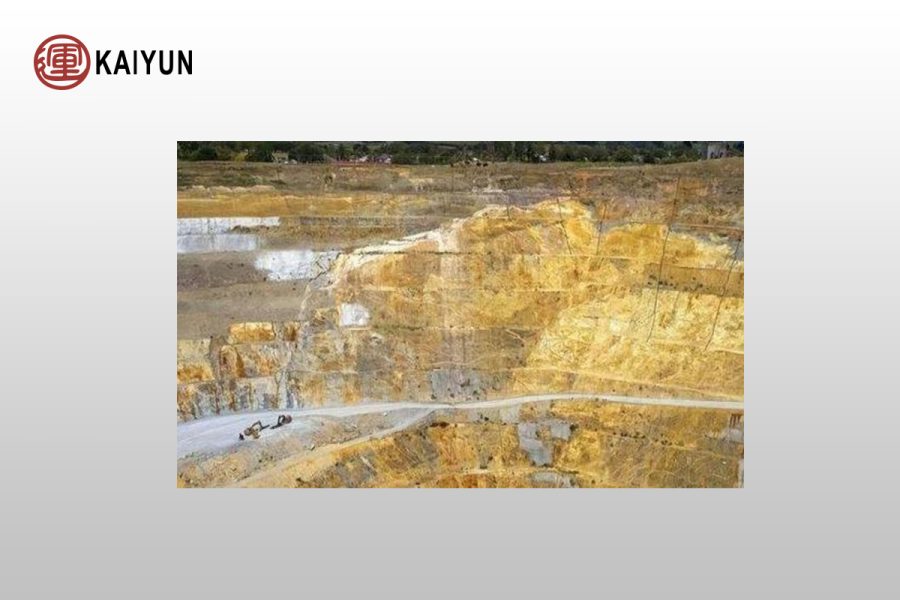Before refining the native gold ore, pretreatment is required, mainly to crush the large ore into fine particles, usually requiring -200 mesh (i.e., particle diameter less than 0.074 mm) to account for about 60%-80%, to ensure that the gold minerals are fully dissociated from other minerals, creating conditions for subsequent beneficiation and extraction operations. Then the refining is carried out, and the main methods are gravity separation, flotation, cyanidation and smelting.

Gold gravity separation
Using the high density of gold, gold particles are separated by shaking tables, chutes and other equipment. The shaking table uses the combined effect of the asymmetric reciprocating motion of the shaking table and the lateral water flow to separate the ore particles on the bed according to density and particle size. A thin layer of slurry is spread on the inclined bed of the shaking table. When the shaking table reciprocates, the ore particles are stratified and separated according to density and particle size under the flushing of the water flow and the friction of the bed. Gold particles with high density gradually move to the concentrate end of the bed, while gangue minerals with low density are washed away by water flow and become tailings; chute beneficiation uses the difference in sedimentation speed of mineral particles of different densities under the action of water flow when the slurry flows in the inclined chute, thereby achieving the separation of gold particles and gangue.
Gold flotation
The gold minerals are attached to the bubbles through chemical agents and separated from other minerals. Before flotation, the slurry after grinding is slurried to adjust the concentration and pH of the slurry. For most gold flotation, the slurry concentration is generally controlled between 20%-40%, and the pH value is adjusted according to the properties of the ore and the requirements of the flotation reagent, usually between 7-11. In the flotation machine, under the action of stirring and aeration, the gold minerals attach to the bubbles and float to the surface of the slurry with the bubbles to form a foam layer. The foam is scraped out by the scraping device to obtain a gold-containing foam product, that is, gold concentrate, and the tailings are left in the slurry.
Gold cyanidation
The gold ore is immersed in a sodium cyanide solution to dissolve the gold, and then the gold is extracted by activated carbon adsorption or zinc powder replacement. During the cyanidation leaching process, the alkaline environment of the slurry must be ensured. Generally, lime is added to adjust the pH value of the slurry to between 10-12 to prevent the hydrolysis of sodium cyanide. Then, sodium cyanide solution is added to the slurry. Under aerobic conditions, gold and sodium cyanide react chemically to form a water-soluble gold-cyanide complex. After leaching, the gold is recovered from the leaching solution by activated carbon adsorption. Activated carbon is added to the leaching solution. After a certain period of stirring, the gold-cyanide complex is adsorbed on the surface of the activated carbon, and then the gold is recovered from the activated carbon by desorption, electrolysis and other processes. Another commonly used method is the zinc powder replacement method. Zinc powder is added to the leaching solution. Zinc and the gold-cyanide complex undergo a replacement reaction to replace gold from the solution to generate metallic gold and zinc-cyanide complexes. The replaced gold precipitate is separated by filtration and other methods to obtain gold mud, which is then smelted and other subsequent treatments to obtain crude gold.
Gold smelting
The extracted gold concentrate is subjected to high-temperature smelting to remove impurities and obtain crude gold. The smelting process is generally carried out in a furnace, and commonly used furnaces include reverberatory furnaces and electric arc furnaces. Before smelting, an appropriate amount of flux, such as borax and sodium carbonate, is usually added to the gold concentrate to lower the melting point and promote the oxidation and separation of impurities. At high temperatures, the gold in the gold concentrate undergoes chemical reactions such as oxidation and reduction with other metals and impurities. The gold is reduced to a metallic state, while the impurities are discharged as slag or gas.